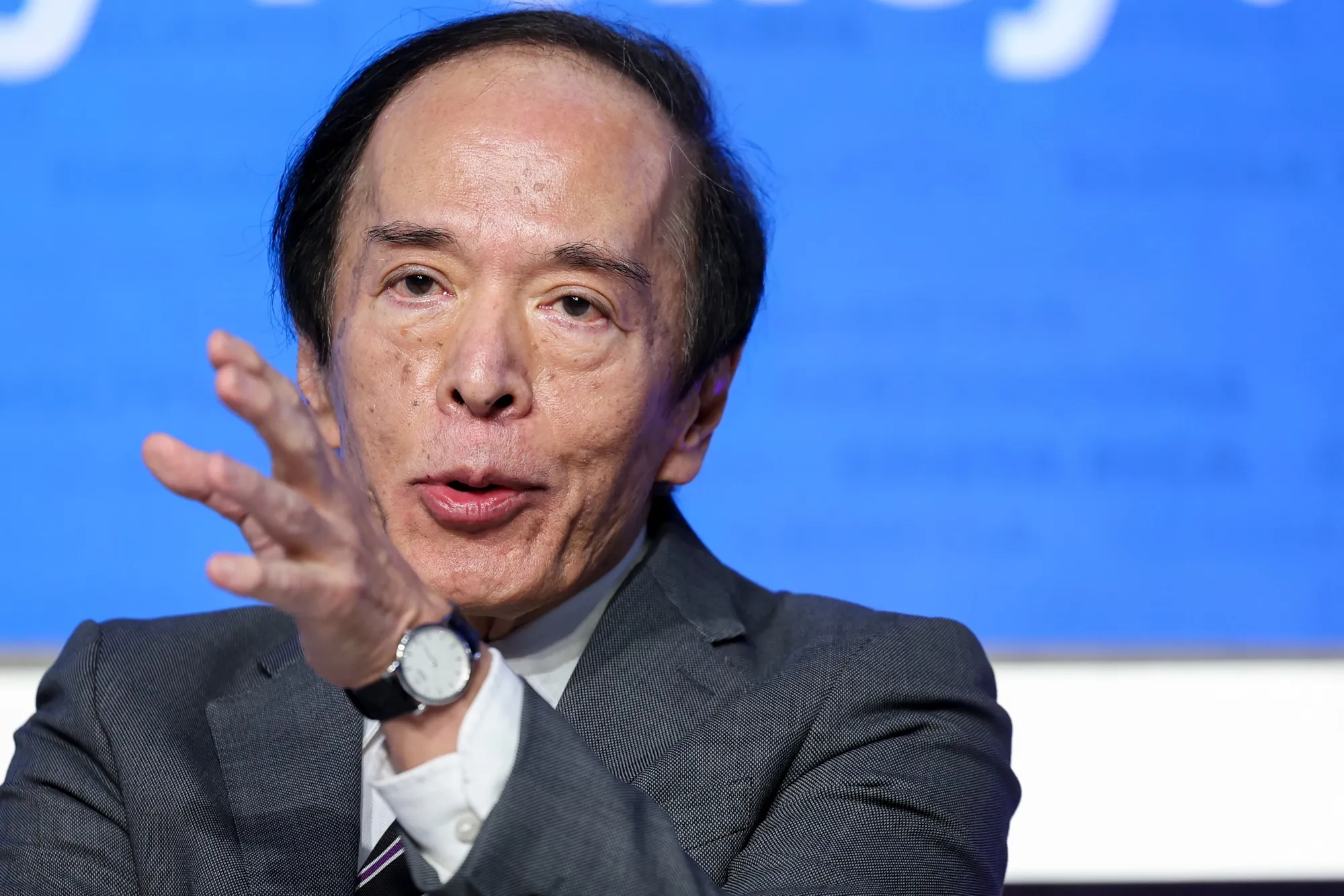Japan’s Inflation Fight Becomes the World’s Liquidity Gamble
Kazuo Ueda faces a defining test as Japan edges toward ending decades of ultra-easy policy. With inflation steady, wages fragile, and the yen sliding (USD/JPY: JPY= 147.7), global markets brace for ripple effects from Tokyo to Johannesburg.

Bank of Japan (BOJ) Governor Kazuo Ueda is edging closer to ending the world’s last era of ultra-loose monetary policy but remains constrained by fragile wage momentum and global uncertainty. Speaking to Kansai business leaders in Osaka, he acknowledged that inflation is on track to durably hit the BOJ’s 2 percent target but warned that slowing global growth and U.S. tariff risks could undermine firms’ willingness to raise pay—leaving his options open on whether to hike in October.
The yen (USD/JPY: JPY=) weakened 0.3 percent to 147.72 after his remarks as traders dialed back expectations of an October move. Futures now price roughly a 60 percent probability of a December hike to 0.75 percent from 0.5 percent, down from 80 percent last week, according to CME data. Market tone suggests Ueda prefers flexibility amid rising external headwinds: a U.S. government shutdown delaying key data releases and the uncertain impact of new American tariffs on Japanese exporters’ margins.
Japan’s export bellwethers—Toyota Motor (TYO: 7203), Sony Group (TYO: 6758), and Panasonic (TYO: 6752)—face higher input costs that could trim FY 2025 profits by 5–7 percent. The Nikkei 225 (INDEXNIKKEI: NI225) remains up 12 percent YTD, but exporters now outperform domestic sectors as yen weakness props up foreign earnings. Every additional yen of depreciation adds roughly 0.8 percent to exporter EPS, analysts estimate, but squeezes household real incomes, reinforcing the policy trap between growth and stability.
The BOJ’s hesitation is rooted in Japan’s mixed inflation anatomy. Consumer prices have exceeded 2 percent for three years, yet wage growth—3.8 percent in the 2025 Shunto talks—remains shy of the 4.5–5 percent pace needed to sustain price gains organically. Ueda warned that if firms refocus on cost-cutting under global uncertainty, “the pass-through from prices to wages could weaken.” That caution underlines Japan’s decade-long struggle to convert cost-push inflation into demand-led inflation.
Since ending yield-curve control and negative rates in 2024, the BOJ has lifted its policy rate only once—to 0.5 percent in January 2025—while core inflation (excluding food & energy) hovers near 2.4 percent. Real GDP growth has slowed to 1 percent annualized, and consumer sentiment is softening. By contrast, the U.S. Federal Reserve (Fed Funds 5.25–5.50 %) and the European Central Bank (Deposit Rate 4.0 %) sit deep in restrictive territory. The yield gap continues to drive capital from Japanese assets into U.S. Treasuries (US10Y: ^TNX) yielding > 4.3 percent, keeping the yen weak and global carry trades alive.
Paradoxically, staying on hold risks importing inflation rather than curbing it. A weaker yen inflates energy and food import costs, threatening a second-round price shock that could force sharper tightening later. This echoes 2013–2015, when quantitative easing boosted inflation but eroded real wages, prompting consumer retrenchment.
Corporate Japan is better cushioned this time. Listed firms hold a record JPY 560 trillion (≈ USD 3.8 trillion) in cash reserves, giving them room to absorb tariff-related shocks. Yet domestic demand remains brittle, and the policy message from Ueda—steady but non-committal—may not satisfy markets eager for clarity. A hawkish faction within the BOJ board already favors a near-term hike to anchor expectations, warning that delayed normalization could leave the bank “behind the curve.”
History provides a warning. In 2006, the BOJ’s cautious tightening ended abruptly as global conditions turned, undermining credibility. Today’s inflation persistence is stronger—headline CPI up 2.8 percent YoY—but structural uncertainty remains. Unlike the 2000s, Japan is no longer the world’s deflation anchor; it is a test case for whether a mature economy can escape decades of stagnation without destabilizing global liquidity.
For international investors, Japan’s policy pivot matters beyond Tokyo. Its ultra-low yields have long underpinned global funding markets. Even a modest rise toward 1 percent could trigger portfolio rebalancing and capital repatriation, lifting the yen and shaking bond markets from the U.S. to Europe. Emerging Asia would feel it too: tighter Japanese liquidity historically redirects capital from regional bond markets like Thailand and Indonesia into domestic assets. Conversely, another BOJ delay could extend yen weakness, enhancing Japan’s export competitiveness but intensifying pressure on rivals such as Samsung Electronics (KRX: 005930) and TSMC (TPE: 2330).
The geopolitical overlay complicates matters further. U.S. tariffs aimed at re-shoring manufacturing risk disrupting global supply chains that feed Japan’s industrial base. At the same time, slowing Chinese demand—industrial output up just 4.4 percent YoY in August per NBS data—reduces Japan’s external growth leverage. For every 1 percent decline in China’s imports, Japanese exports fall 0.3 percent, according to BOJ models. That feedback loop explains Ueda’s caution: premature tightening could choke an economy still dependent on external demand.
Still, credibility carries its own cost. The longer the BOJ waits, the higher the risk of a disorderly repricing in currency and bond markets. Yen volatility has already risen 18 percent since August, and 10-year JGB yields have crept to 0.95 percent, a nine-year high. The TOPIX Banks Index (INDEXTOPIX: TPXBANKS) has gained 16 percent YTD on prospects of higher net-interest margins, signaling that local markets see normalization as overdue.
Ueda’s next opportunity to gauge sentiment will come at the IMF and World Bank meetings in Washington later this month. Discussions on tariffs, global inflation, and monetary spillovers could shape his October stance. If the BOJ signals another delay, markets will push rate-hike bets into 2026; if he surprises with a 0.25 percent move, the yen could strengthen to JPY 142 per USD and compress global carry positions.
For now, the BOJ stands alone in navigating the post-inflation landscape. Japan’s price cycle is real, but so are the political and market risks of acting too soon—or too late. Investors will watch whether Ueda’s caution sustains stability or breeds volatility across currencies, bond spreads, and equity valuations from Tokyo to New York and Johannesburg.





